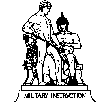

Morden, Bettie J., 1921-
The history of the Women's Army Corps, 1945-78 / by Bettie J. Morden.
p. cm. 1. United States. Army. Women's Army Corps-History. I. Title
UA565.W6M67 1989 89-600225
355.3'48'0973-dc20 CIP

|
Charles P. Roland University of Kentucky |
Jamie W. Moore
The Citadel |
|
Edward M. Coffman
University of Wisconsin |
Maj. Gen. J. H. Binford Peay III
U.S. Army Command and General Staff College |
|
Maj. Gen. Jack B. Farris, Jr.
U.S. Army Training and Doctrine Command |
Brig. Gen. Michael J. Scotti
Deputy Surgeon General |
|
Brig. Gen. Roy K. Flint
U.S. Military Academy |
Brig. Gen. Stephen Silvasy, Jr. U.S. Army War College |
|
L. Eugene Hedberg
H.D. Reid Foundation |
William Walker
Archivist of the U.S. Army |
|
Earnest R. May
Harvard University |
Russell F. Weigley
Temple University |
|
David B. Miller Office of the City Solicitor Scranton, Pa. | |
U.S. Army Center of Military History
|
Acting Chief Historian
|
Morris J. MacGregor, Jr.
|
|
Chief, Histories Division
|
Lt. Col. Robert E. Morris
|
|
Editor-in-Chief
|
John W. Elsberg
|
| Washington, D. C. 14 July 1989 |
WILLIAM A. STOFFT Brigadier General, U. S. Army Chief of Military History |
vii
The Author
viii
ix
x
xi
xii
|
|
Tables (excluding Appendixes)
Charts
Illustrations
Illustrations courtesy of the following sources; p.320, Army Times; p.397, H. K. Barnett. All other illustrations from the files of the Department of Defense and U.S. Army center of Military History. Paperback cover: Retreat, Women's Army Corps Center by Robert Norton, Courtesy of the WAC Museum, Fort McClellan, Alabama.
page updated February 2001